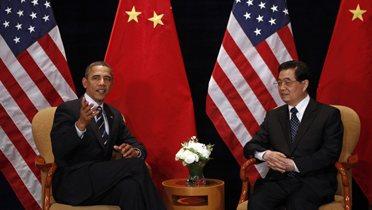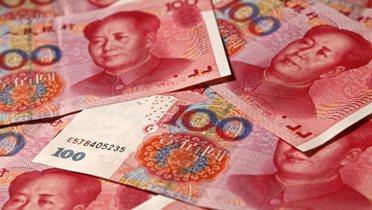This op-ed was originally published by East Asia Forum.
“China has always used currency manipulation to steal our businesses and factories, hurt our jobs, depress our workers’ wages and harm our farmers’ prices” tweeted the president of the United States. “Not anymore!” Mr. Trump’s assertions on currencies range from overblown to completely baseless. But this has not stopped his actions likely to endanger the U.S. and global economies.
U.S. authorities labeled China a currency manipulator on 5 August 2019 for the first time in 25 years after the RMB fell below the 7 RMB-per-dollar level. This was despite China’s actions failing to satisfy the U.S. Treasury’s own definition of a currency manipulator. While U.S. institutions may keep President Trump in check in the near term, this represents a dangerous escalation in tensions and a serious challenge to financial markets, U.S. institutions, and the rules-based system.
An undervalued exchange rate makes a country’s exports cheaper than they otherwise would be compared to those of other countries. Economists measure whether an exchange rate is undervalued by calculating what an exchange rate ought to be based on the characteristics of that economy, how much it trades with the world, how much it invests overseas, and how much other countries invest in it. If an exchange rate is below what these fundamentals imply it ought to be, it is possible (though not conclusive) that the country is depreciating its exchange rate to achieve a competitive advantage.
This has not been the case for China. The IMF judges that China’s exchange rate in 2018 was broadly in-line with its fundamentals. This is not new. The IMF reached the same conclusion in its analyses of China’s currency for at least the last five years and, before that, found that China’s exchange rate was only marginally undervalued. U.S. Treasury analysis comes to the same conclusions, supported by the fact that China’s current account surplus is almost nonexistent: down from 10 percent of GDP in 2007 to almost zero today.
Economists also assess whether a country is manipulating its exchange rate to achieve a competitive advantage by monitoring whether they persistently engage in one-sided interventions in foreign exchange markets. The U.S. Treasury has never been able to demonstrate this for any major U.S. trading partner, including China.
It is therefore perplexing why China has suddenly been labeled as a currency manipulator, a label which opens the door to sanctions and further trade restrictions. The trigger was that, for the first time in 10 years, China’s central bank has allowed the RMB to fall below the 7 RMB-per-dollar level. But the key word in this sentence is “allow.” A slowing Chinese economy, weakening exports due to U.S. trade restrictions, and an almost balanced current account mean a weaker Chinese currency is to be expected. “They are not driving the currency down,” notes Marc Chandler, Chief Market Strategist at Bannockburn Global Forex “but just accepting market forces.”
Eswar Prasad, senior fellow at the Brookings Institution and professor at Cornell University, notes that China doesn’t even meet the U.S. Treasury’s own definition of a currency manipulator. Mark Sobel, a 40-year U.S. Treasury veteran, made a similar point. “It [China] has not been intervening,” he says. “By Treasury’s own foreign exchange-report criteria, China doesn’t even come close to meeting the terms for manipulation.” Labeling China as a currency manipulator, contrary to its own criteria, undermines the credibility of the U.S. Treasury.
China is not alone. President Trump has regularly accused Europe and Japan of pushing down the value of their currencies to unfairly compete with the United States. It is true that the exchange rates of Germany, Japan, South Korea, Mexico, and the euro area have been persistently undervalued in recent years. But even for these economies, the reality is more complex than what Trump suggests.
Germany’s exchange rate, for example, is undervalued by between 8 and 18 percent. But this is primarily because it shares an exchange rate with the rest of the euro area. And although the common currency gives Germany an undervalued exchange rate, it gives France, Italy, and a host of other euro area economies an overvalued exchange rate, netting-out most of the euro-wide impact.
U.S. punishment of these economies for currency manipulation would rightly leave them feeling aggrieved and make the prospect of a currency war more likely. The costs would be substantial. Most economic models suggest that a currency war will distort trade and investment flows. But it is also likely to cause panic among investors. Unpredictable exchange rates, combined with restrictions on trade and cross-border commerce, will see investors sit on their cash and withhold investment. The hit to growth and employment could be substantial.
The critical question is whether Trump is able to wage a currency war or not. The independent U.S. Federal Reserve has so far held its ground. Although it cut interest rates recently, weakening the U.S. dollar, Fed Chair Jerome Powell was crystal clear that this was a one-off and was not part of a new cycle of rate cuts.
Trump could use the Treasury’s Exchange Stabilization Fund—the fund former President Bill Clinton used to bail out Mexico in the 1990s—to start selling U.S. dollars. But with about only US$100 billion in the kitty, and dollar holdings of just US$23 billion, it is unlikely to be large enough to achieve any sustained depreciation of the U.S. dollar.
The responsible policy players in the United States will try to slow President Trump down. But for how long? And if President Trump cannot weaponize the U.S. dollar, will he simply go back to raising tariffs, quotas, and sanctions still further? One thing is for sure, U.S.–China tensions are getting worse before they get better.







Commentary
Op-edUS institutions will keep Trump’s currency war at bay, but for how long?
August 19, 2019